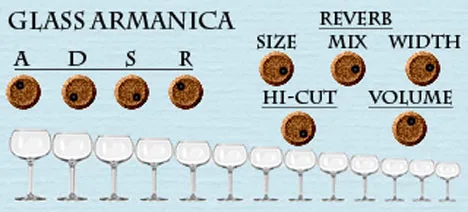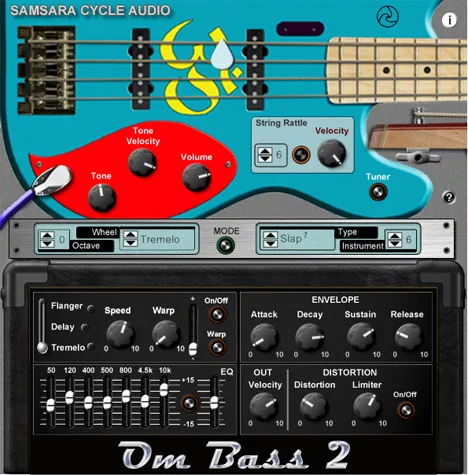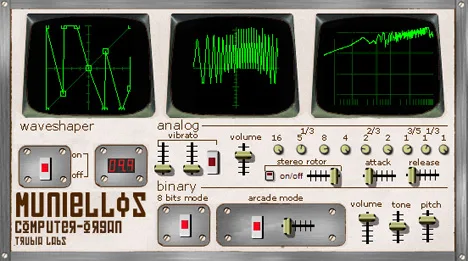Discover the Magic of Crystal Sound with Glass Armanica
Looking for a unique and atmospheric sound for your music projects? The Glass Armanica plugin from developer Arman Bohn is your chance to touch history and add something truly special to your palette.
Echoes of the Past: Benjamin Franklin’s Instrument
The Glass Armanica (or Glass Harmonica) is an amazing musical instrument invented in 1761 by Benjamin Franklin himself. It consists of a set of glass hemispheres strung on a horizontal axis. When a musician moistens their fingers and touches the rotating edges of the glass bowls, a pure, transparent, crystal-clear sound is produced. This instrument was extremely popular in the 18th-19th centuries, but over time its use became rare, partly due to the complexities of manufacturing and the mysterious superstitions associated with its hypnotic sound.
Glass Armanica VSTi: Reproduction in the Digital World
The Glass Armanica plugin from Arman Bohn is the author’s first attempt to recreate this historical instrument in VSTi format, making it accessible to modern musicians. It is a sampler instrument based on recordings of real sounds obtained in a unique way.
Sample Creation Process
To record the sounds, the developer used wine glasses, filling them with water and carefully tuning each glass with a chromatic tuner to the desired pitch (literally drop by drop!). The recording was done using an Oktava MC-012 condenser microphone with a cardioid polar pattern, connected to a Seventh Circle C84 preamp. This approach allowed to preserve the natural, rich overtones of the glass bowls.
Current Plugin Features
Currently, Glass Armanica offers a basic but functional set of features focused on reproducing the main characteristics of the instrument:
- Range: The plugin contains samples of one full octave, which corresponds to MIDI notes from 72 to 84 (6th octave). This allows you to use the instrument to create melodic lines or atmospheric passages in the upper register.
- ADSR envelope control: Standard parameters Attack, Decay, Sustain, Release allow you to shape the dynamics and duration of notes, from short “chimes” to long, flowing tones.
- Velocity Sensitivity: Sound reproduction reacts to the force of pressing the MIDI controller keys, which adds expressiveness and realism to the performance.
- Built-in Reverb: To give the sound space and atmosphere, the plugin is equipped with a simple reverb with Width (stereo field width), Size (space size), and Mix (ratio of original and processed signal) controls.
- High-Cut Filter: Allows you to cut off part of the high frequencies, making the sound softer or darker, depending on your needs.
- Master Volume: Overall plugin volume control.
The author notes that he originally planned to record all three octaves of the real instrument, but faced limitations in finding glasses of sufficient size. He does not exclude the possibility of releasing an expanded version of Glass Armanica in the future if it becomes possible to record samples for the lower octaves.
Who Is This Plugin For?
Glass Armanica will be a great addition to the arsenal of composers and musicians who work in the genres of ambient, new-age, cinematic music, experimental electronics, or any other areas where an unusual, clean, and atmospheric sound is needed. Its crystal timbres can serve both to create main melodies and to add textures and background elements.
Conclusion
Glass Armanica from Arman Bohn is not just a VST instrument, it is a digital window into the world of rare historical sounds. Despite the initial version and limited range, the plugin is already able to inspire the creation of something unique thanks to its authentic sound and ease of use. Download it and add a touch of crystal magic to your tracks!



